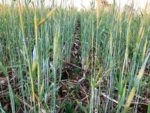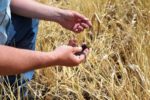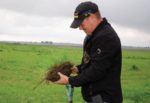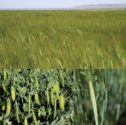Advertise Follow Us
No-Till Farmer

View Archived Issues
November 2022: Conservation Tillage Guide
Volume: 51
Edition: 11
Get full access NOW to the most comprehensive, powerful and easy-to-use online resource for no-tillage practices. Just one good idea will pay for your subscription hundreds of times over.
-
Table of Contents
Table of Contents
Digital Subscribers enjoy full access to No-Till Farmer's premium content. A paid subscription is required in order to read these stories.Are you a Premium or Digital subscriber? You enjoy:
- Unlimited access to all digital content here
- Freedom to view No-Till Farmer on all your devices
- Gleaning years of knowledge from the world's largest online library dedicated to no-till practices
Are you a Print only subscriber? Easily upgrade your subscription today! For only $10 more on a one year option, you gain the benefits of both the print edition delivered to your door and unlimited access to thousands of online pages of no-till content.
Beat Glyphosate-Resistant Weeds by Planting Green
In the fight against increasing herbicide resistance, the practice of planting green into a living cover crop offers weed suppression and potential money savings.Read MoreFocus on the ‘4Rs’ for Higher Yields
The 2022 No-Till Farmer Conservation Ag Operator Fellow delves into the ‘4Rs’ of nutrient management: Right source, right time, right rate and right place.Read MoreNo-Tillers Find Success with Diverse Crop Rotations
Efficiency and input reduction lead Brian and Jamie Johnson to continually try new ideas on their 1,700-acre operation that includes more than a half-dozen crops.Read MoreCover Crop Nutrients Keep Money in No-Tiller Pockets
Rick Clark knows how much you can save using cover crops, and he’s got numbers.Read MorePhillips & Young: Beyond the Grave
Kentucky’s dynamic duo set the table for a pending ag revolution in their seminal book on no-tillage.Read MoreNo Stone Unturned in Quest for Healthy Soils
Northwest Ohio no-tiller solves soil health puzzle with plant diversity, cover crops and heavy focus on water quality.Read MoreWhat I’ve Learned from No-TillingNo-Till Success, Improved Soil Health Means ‘No More’ Chemical Fallow
This northern Montana couple grazes beef and improves soil life with farm-produced microorganisms that they grow, extract and apply to eight different no-tilled crops.Read More -
Featured Articles
Featured Articles
Beat Glyphosate-Resistant Weeds by Planting Green
In the fight against increasing herbicide resistance, the practice of planting green into a living cover crop offers weed suppression and potential money savings.Read MoreFocus on the ‘4Rs’ for Higher Yields
The 2022 No-Till Farmer Conservation Ag Operator Fellow delves into the ‘4Rs’ of nutrient management: Right source, right time, right rate and right place.Read More - Digital Edition














